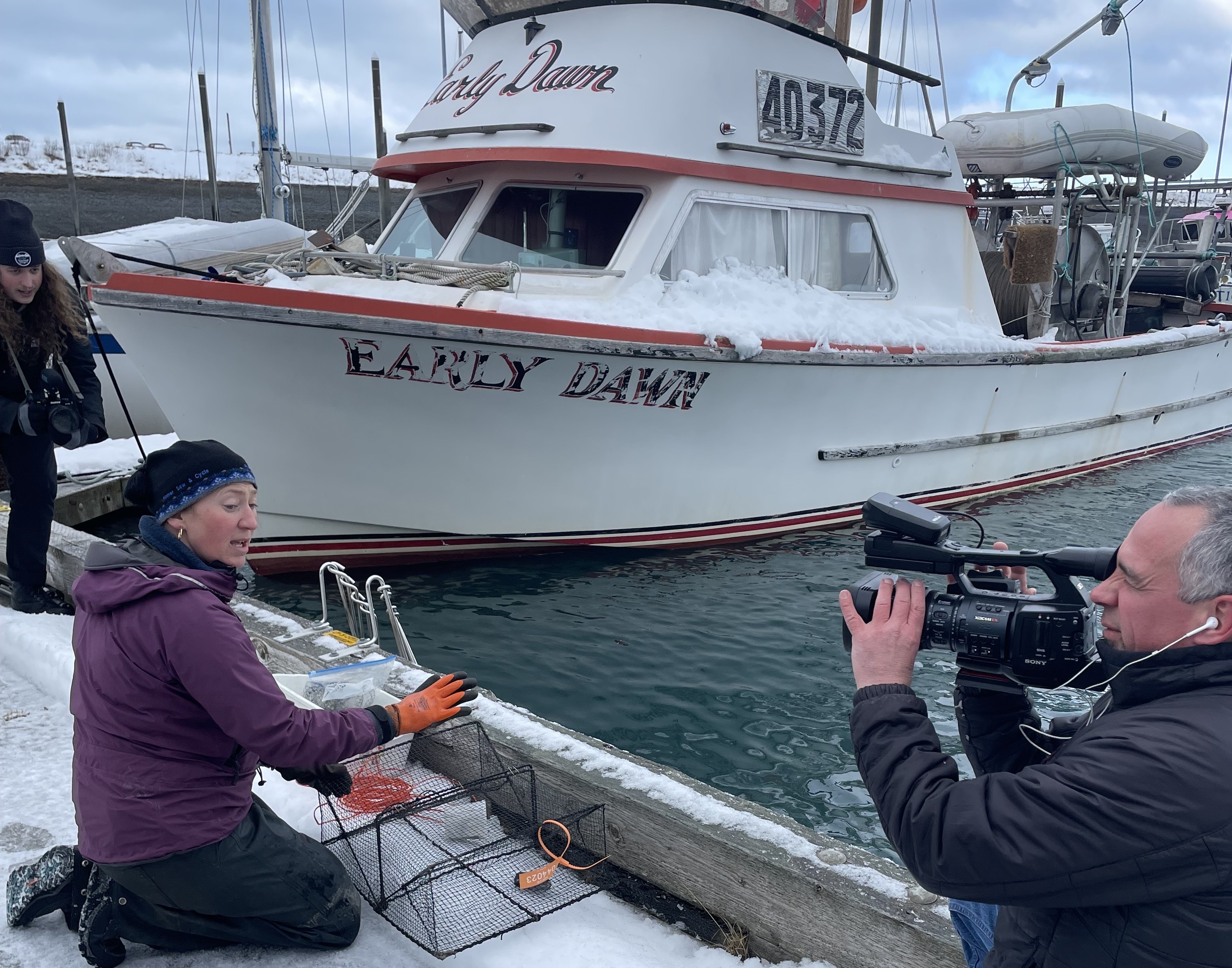Journalism and public communications students team up with Kachemak Bay National Estuarine Research to spread word of invasive European green crab
by Eric Chase |

Students from UAA teamed up with the Kachemak Bay National Estuarine Research Reserve (KBNERR) to support the organization's communications efforts and raise awareness of the invasive European green crab.
Several classes from the Department of Journalism and Public Communications (JPC) — about two dozen students — contributed to the project. They produced public service videos, created memes, wrote social media posts and designed informational collateral to spread the word about the threat of the species, presenting KBNERR with materials for an integrated communications campaign.
The collaboration between JPC and KBNERR came together in fall 2022, when Dr. Joy Mapaye’s Principles of Strategic Communications class started working with the research reserve. This spring, Atwood Chair of Journalism John Sharify and Professor Paola Banchero took students to Homer to interview Alaskans working on prevention efforts. They were joined by Scott Jensen, a video creator and former Atwood Chair, and Emily McLaughlin, senior account manager at public relations firm Thompson & Co. and a JPC alumna. Both Jensen and McLaughlin provide professional advice and mentorship to the students on this community-engaged project.
“In Professor Sharify’s class, the Craft of Storytelling, we’re focusing on writing compelling stories that aim for the heart,” said senior Donny Randle. “We incorporated everything we learned in that class and produced a video with all the footage we shot in Homer. We wanted to make sure people knew what a huge impact the European green crab could have on Alaska, and I think we told that story in a powerful way.”
The European green crab is a small shore crab, native to the Atlantic coast of Europe and northern Africa, that has become an invasive species in many parts of the world and is making its way into Alaska. The first green crab shell was found in Alaska on Annette Island in July 2022. The presence of the crab in Alaska's coastal waters is particularly alarming because it threatens the state's valuable fisheries, including salmon, Dungeness crab and herring. The European green crab can cause significant ecological damage by outcompeting native species for food and habitat and reproducing at a rapid rate.
To safeguard Alaska's coast from invasive species, fishermen and boaters should take precautions. Regularly cleaning fishing equipment, such as nets and traps, after use is crucial to slow the spread of these species. Additionally, thoroughly washing boats before transferring them from one river or stream to another is essential in preventing this invasive crabs' spread.
Identifying the European green crab is another way to help protect Alaska's coasts. This is challenging as the crab's coloration varies depending on its stage in life. The most reliable way to identify them is to look for five teeth or spines on each side of the crab, located outside the eyes. If anyone suspects that they have found a European green crab, they are advised not to collect it but instead to call 1-877-INVASIV to report it.
“What the experts are telling us is that if we think about some of the things we love in Alaska, whether it’s the seabird or whether it’s the diversity in our tide zones, or our salmon,” Sharify said. “It’s likely that those things we love will be negatively impacted by the arrival of the European green crab.”
The invasion of the European green crab is a significant threat to Alaska's coastal ecosystems and fisheries. It is critical that everyone takes steps to prevent the spread of the species by cleaning their gear and boats after each use and reporting any sightings of the European green crab to the appropriate authorities. By working together, we can help protect Alaska's coastal waters and the valuable species that depend on them.
What can we do if we see them? Take photos and report suspected European green crab sightings to 1-877-INVASIV. If immediate action is taken, according to the experts, you can prevent the long-term impacts and protect the things we love about Alaska.
 "Journalism and public communications students team up with Kachemak Bay National Estuarine
Research to spread word of invasive European green crab" is licensed under a Creative Commons Attribution-NonCommercial 4.0 International License.
"Journalism and public communications students team up with Kachemak Bay National Estuarine
Research to spread word of invasive European green crab" is licensed under a Creative Commons Attribution-NonCommercial 4.0 International License.














